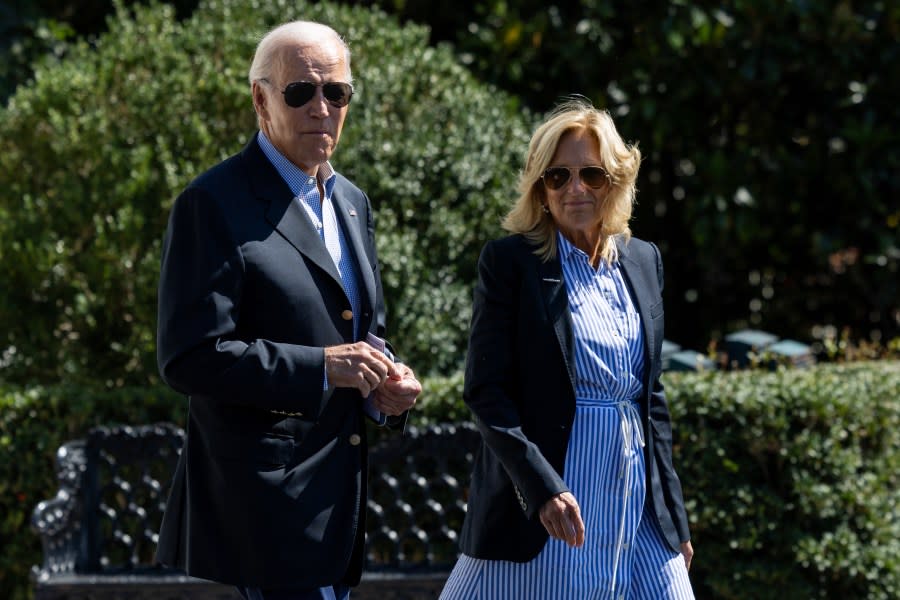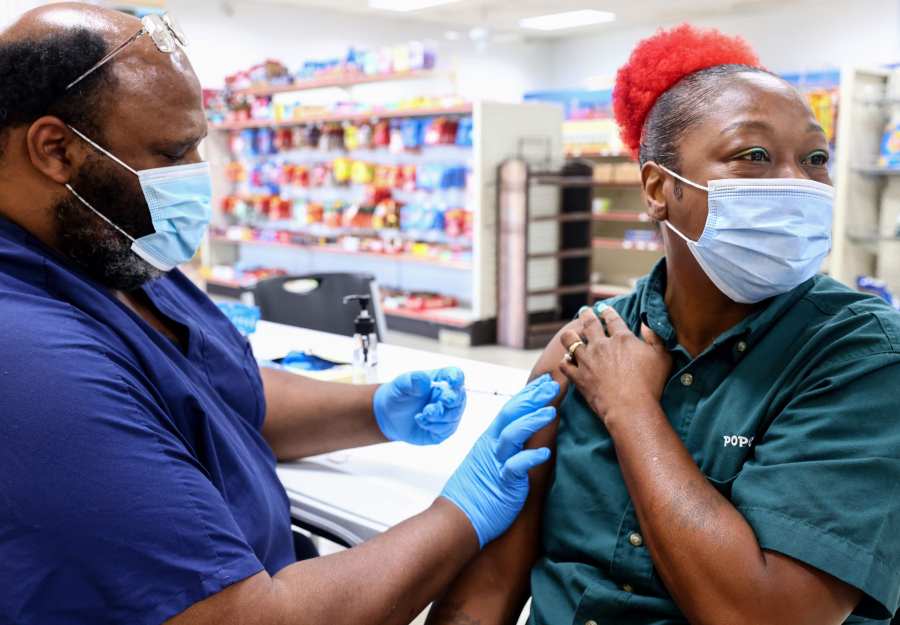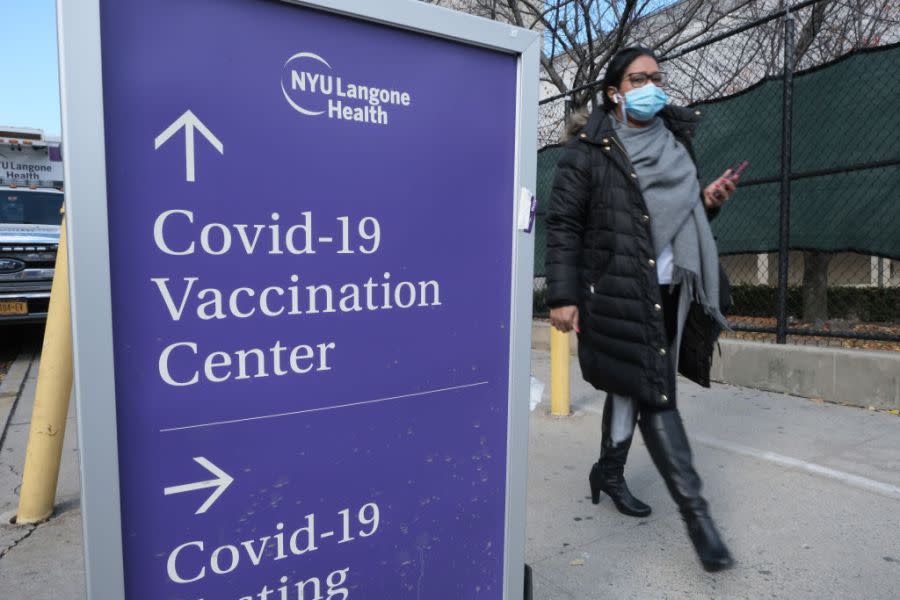What to know about COVID-19 this fall amid surge
- Oops!Something went wrong.Please try again later.
- Oops!Something went wrong.Please try again later.
- Oops!Something went wrong.Please try again later.
As cases climb in the U.S., health experts encourage Americans, particularly Black and brown Americans at risk, to stay vigilant and get the newly updated vaccine this fall.
COVID-19 cases are rising again in the United States as the White House and health experts warn the public to be cautious and up-to-date on their vaccine shots.
The risk of COVID-19 was highlighted on Monday after first lady Jill Biden, who is twice vaccinated and boosted, tested positive for the virus. White House press secretary Karine Jean-Pierre said in a statement that President Joe Biden, who was with the first lady in Delaware during the holiday weekend, tested negative and will “test at a regular cadence this week and monitor for symptoms.”
On Tuesday, Whoopi Goldberg also tested positive for COVID-19, missing the live taping of the season premiere of “The View.”

The presidential spokesperson said there are no updates to the White House COVID-19 protocols in light of the first lady’s positive testing and stressed, “We have more tools and systems available today to help communities this fall and winter season.”
A new COVID-19 vaccine coming this fall amid surge
One of those tools will be a newly updated COVID-19 shot that will hit the market in two to three weeks after Federal Drug Administration (FDA) approval.
Dr. Anthony Fauci, the White House’s former chief medical adviser, told theGrio that “virtually anybody should get” the new vaccine but “mostly those who are at risk.”
The current distinguished professor at Georgetown University’s School of Medicine said getting the latest shot this fall will be crucial to mitigating the spike in COVID-19 cases.
Fauci said hospitalizations for the virus are up 19% in the United States. Deaths have also increased, according to the CDC. However, it’s difficult to identify how many infections there are because health departments report data weekly instead of daily due to the federal public health emergency ending in May.
“Once that essentially ended, the actual tracking diminished,” said Fauci.
The “encouraging news” is that despite the surge in hospitalizations, it is “very low” compared to a year ago, or even January 2023, said the longtime physician and medical researcher. The lower rate is attributed to herd immunity in the U.S. due to more than 80% of Americans receiving at least one vaccine and those who have already been infected.
“It is unlikely that we are going to see that kind of tsunami of cases and hospitalizations and deaths that we’ve seen,” Fauci told theGrio.
Black and brown communities are still at risk

While infections are not expected to reach the levels of previous fall surges, it doesn’t mean Black and brown communities aren’t still vulnerable to COVID-19.
Dr. Melissa Clarke, president and CEO of the BHE Group and co-founder of Black Coalition Against COVID-19, told theGrio, “Even though the vaccination gap between Blacks and whites narrowed when it comes to surges, Black people are still getting hospitalized more than whites.”
Clarke stressed that despite the end of the COVID-19 public health emergency, “It’s not over.” She added, “We still must be vigilant, especially if we’re in a high-risk group.”
Black Americans are also more susceptible to symptoms of long-term COVID-19. Dr. Clarke said 1 in 10 people with the virus get long COVID “regardless of how mild the infection.”
There are also systemic inequities like under-resourced hospitals in communities of color and access to the COVID-19 treatment drug Paxlovid, which patients are eligible for within the first five days after testing positive. Eligibility includes having an underlying health condition or being 65 or older.
“Studies have shown that people of color…are still not getting and accessing Paxlovid at the same rate,” said Clarke. “Probably because they don’t have the same access to getting to a doctor or getting to a clinic.”
Daniel Dawes, a health policy expert and executive director at Meharry Medical College’s Global Health Equity Institute, told theGrio ongoing inequities Black and brown people face is why it is “absolutely critical” that public health institutions continue to build healthcare infrastructure systems in communities of color.

“We’ve got to continue doing research to understand the interventions that are culturally appropriate for each of these groups and that are geographically appropriate for these groups,” said Dawes. “A one-size-fits-all approach, as we have seen, does not work.”
He continued, “There needs to be greater investments into understanding interventions that worked…or didn’t work, and we need to understand why they did or didn’t work at that point.”
In addition to getting the new fall vaccine, Dr. Fauci said those in certain regions where the CDC recommends wearing a mask might want to take heed, particularly for those at a higher risk.
“If you do get infected, you might have a serious outcome,” he warned.
As for vaccinations, Fauci said a cadence of every fall and winter season is likely necessary.
“There are now going to be three circulating respiratory diseases that usually congregate around the fall and winter months, and that’s influenza that we’ve known about forever, the flu [and] now also COVID and RSV,” said the former director of the National Institutes of Health.
For those worried about the kind of COVID-19 surge that led to lockdowns in 2020, Dr. Clarke said there’s an “outside chance.”
“It really depends on what the next variant is,” she explained. “We know that the virus is continuing to evolve. If, for some reason, there is a variant that escapes the ability of current medicines to take care of it…that might happen.”
However, due to existing public health precautions such as medications, vaccines, and boosters, Clarke said, “For right now, we’re good.”

Gerren Keith Gaynor is a White House Correspondent and the Managing Editor of Politics at theGrio. He is based in Washington, D.C.
TheGrio is FREE on your TV via Apple TV, Amazon Fire, Roku, and Android TV. Please download theGrio mobile apps today!
The post What to know about COVID-19 this fall amid surge appeared first on TheGrio.

